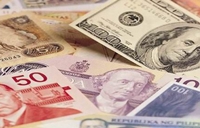India’s external debt hit 20.6 % of GDP in first 9 months of FY’13
28 Mar 2013
India's external debt rose to 20.6 per cent of the country's gross domestic product (GDP) during the first nine months of the current financial year (April-December 2012-13), against the 19.7 per cent increase for the whole of the previous fiscal ended 31 March 2012.
 This has been due mainly to an increase in the country's current account deficit in December 2012 to 6.7 per cent of GDP, driven by heavy oil and gold imports and muted exports.
This has been due mainly to an increase in the country's current account deficit in December 2012 to 6.7 per cent of GDP, driven by heavy oil and gold imports and muted exports.
The country's external debt rose $30.8 billion to $376.3 billion at end-December 2012, from $345.5 billion at end-March 2012, an increase of 8.9 per cent over the first 9 months of fiscal 2012-13, official data released today showed.
There was an increase in both long-term as well as short-term components of the country's external debt during the period, the department of economic affairs of the finance ministry said in a release.
The main component in long-term debt were bank deposits of non-resident Indians (NRIs) and commercial borrowings of corporates, while short-term debt rose on account of trade-related credits, data showed.
Long-term debt showed an increase of $17.1 billion (6.4 per cent) at $284.4 billion as of end-December 2012 over the end-March 2012 level, while short-term debt increased by $13.7 billion (17.5 per cent) to $91.9 billion during the nine months ended December 2012.
Long-term debt accounted for 75.6 per cent of the country's total external debt while the remaining 24.4 per cent consisted of short-term debt.
Within long-term debt, commercial borrowings accounted for 30.0 per cent, followed by NRI deposits (18.0 per cent) and multilateral debt (13.7 per cent).
Overseas debt of the government (sovereign) stood at $81.7 billion (21.7 per cent) at end-December 2012 against $81.9 billion (23.7 per cent) at end-March 2012.
Dollar denominated debt had the highest share in the country's external debt stock at 56.8 per cent at end-December 2012, followed by rupee-denominated debt (23.1 per cent), SDR (7.9 per cent), Japanese yen (7.6 per cent) and euro (3.2 per cent), data showed.